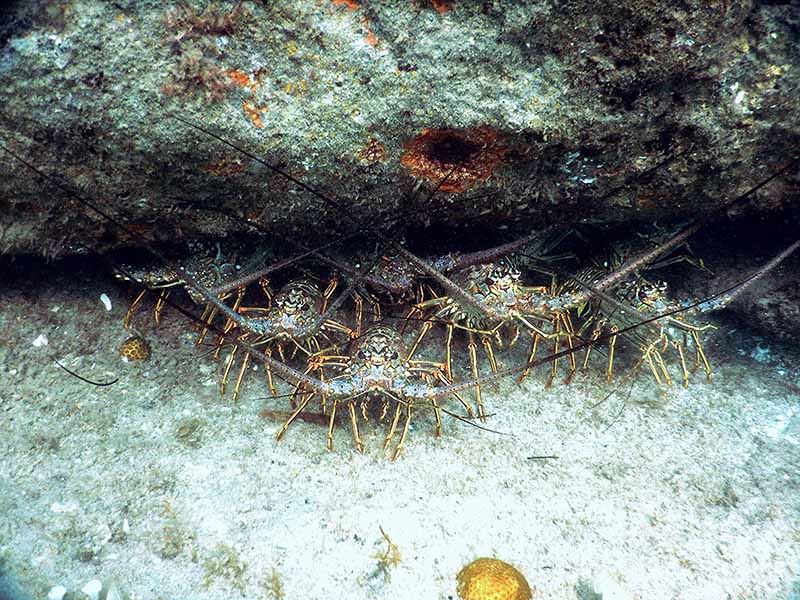
Visibility reports have been scarce since Tropical Storm ETA passed through our area last month but that could change as surface conditions improve in December. Passing cold fronts are common but are usually interrupted with a calm spell that can last a week or more this time of year. Divers who plan around cold fronts and are ready to take advantage of calm seas should expect exciting dives
It was so windy and rough in November that hardly anyone actually made it offshore to dive and reefs should be loaded with fish and lobster since there has been little to no pressure for the better part of a month. Once the seas lay down, many are surprised to see clear water return after about a week or less of calm conditions, thanks in part to South Florida’s proximity to the Gulf Stream. This northbound current does a nice job of flushing away murky water and replacing it with cleaner water coming up from the Caribbean. Unfortunately, freshwater releases are still happening, but the good news is these plumes are limited to inshore and nearshore waters and have minimal effect a few miles out.
While it’s true freshwater releases continue to pillage the St Lucie River, lagoon and inlet, it is surprising how much misinformation there is surrounding the effects on reefs offshore. Inshore waters are for sure brown and even reefs near the St Lucie Inlet, like Peck Lake, are affected too, but that’s not the case once divers venture a few miles offshore. Reefs offshore and especially south of the St. Lucie Inlet do not experience the same impacts as those close to shore. For example, Loran Tower Ledge is around 12 miles southeast from the inlet and is relatively unaffected by the releases since the prevailing north current does not allow water to make it this far offshore; same is true for the south end of the Six Mile Reef. These are great places to explore without having the deal with freshwater from inshore waters. While closer to shore, it has been noted that, since freshwater is less dense then salt water, it floats near the surface. This means a murk layer in the first 10 to 15 feet will dissipate giving way to clear water beneath.
FORECAST BY: Steve Wood
Deep Six Watersports – Stuart
(772) 288-3999 Stuart
(772) 562-2883 Vero
Email: Steve.wood@deepsix.com
Website: www.deepsixintl.com




